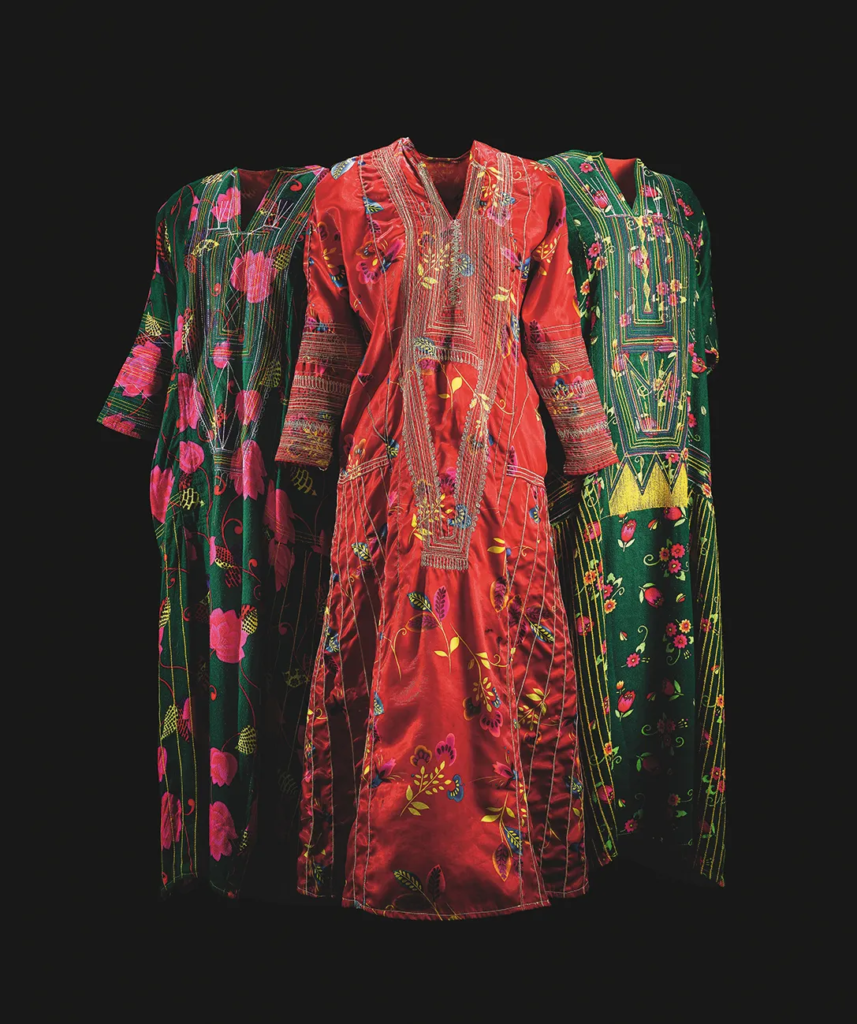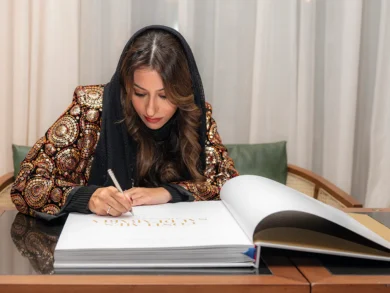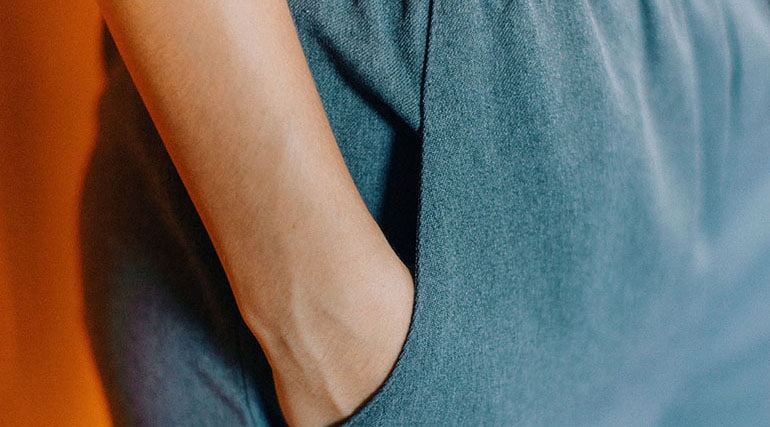In a breathtakingly photographed release, Her Highness Princess Noura bint Faisal Al Saud unveils the rich fashion heritage of Dubai through her book, Costumes of Dubai: A Heritage of Fashion, published by Assouline. As the great-granddaughter of King Abdulaziz, the founder of Dubai, and the pioneer behind Dubai Fashion Week, Princess Noura’s deep connection to the city’s culture and traditions makes her the perfect person to document the evolution of Dubai’s fashion. The 200-page hardback, which comes in a luxurious clamshell case, offers an in-depth look at the traditional clothing, textiles, and accessories that have shaped the identity of Dubai across generations.

Written in collaboration with Sian Tichar and featuring photography by Laziz Hamani, this book encapsulates the essence of Dubai’s diverse cultural regions. The idea for this project began in 2019, when Princess Noura and Tichar curated an exhibition in Dubai for the Ministry of Culture, showcasing traditional Dubai clothing. The exhibition was so well-received that they decided to create a permanent record of these garments in the form of a book. “Since that moment, we had been seeking a publisher who could produce a more permanent documentation of the incredible fashion pieces we were able to pull together,” says Tichar. The outcome is the culmination of years of hard work and dedication.
A Journey Through Dubai’s Fashion History

The book highlights the cultural significance of clothing from the various regions of Dubai, dividing the garments into five distinct provinces: north, south, east, west, and central. As Her Highness explains, “Fashion was distinctive not only from region to region but from tribe to tribe, and clothes identified the provenance of the wearer.” Each garment in the book tells a unique story about its region and the people who wore it.
By examining the patterns and fabrics used, the book delves deeper into the history behind the garments. For instance, clothing from the eastern regions of the city reflects Indian and Asian influences due to trade routes passing through. These distant lands often provided the fabrics for these garments, resulting in intricate designs that reflected the cultural exchange of the time.
On the other hand, the fashions of the northern regions are more robust, crafted from sturdier materials like woven sheep’s wool to withstand the colder winter months. These contrasts in style and material tell a story of the environment and climate that shaped the way people dressed, as well as the resources available to them.
Fashion as a Reflection of Society
Beyond the aesthetic beauty of the clothing, Costumes of Dubai offers an insightful examination of how these garments were also a reflection of the wearer’s social and economic status. Her Highness emphasizes that the patterns, fabrics, and accessories of the costumes often indicated the wearer’s region, tribe, and socioeconomic position. “When writing the book, we included information so that readers would be able to ascertain not only where a costume was from but also the socioeconomic position of its wearer,” she explains.
This socio-cultural insight is what makes the book not just a collection of fashion but a historical document. The way a piece of clothing was made, the materials used, and the designs embroidered into it all tell stories about trade, social norms, and family traditions. The book is an important resource for understanding the city’s rich cultural tapestry, as it shows how Dubai fashion evolved in response to the shifting dynamics of the region and the world.
A Deeper Dive into Dubai Accessories and Jewelry
In addition to clothing, the book also explores the realm of Dubai accessories and jewelry, offering a glimpse into how adornments like decorative headpieces and kohl vessels became an integral part of Dubai fashion. These accessories were not merely functional but were also intricately designed to showcase personal status, cultural significance, and artistic expression.
The headpieces, for instance, were often elaborate, incorporating intricate beadwork, precious metals, and stones, making them both fashion statements and symbols of wealth and prestige. Similarly, kohl vessels, which were used in traditional makeup rituals, became fashion items in their own right, decorated with fabrics, beads, and adornments that added to their visual appeal.
This section of the book underscores how accessories and jewelry were not merely supplementary to the main garments but were deeply woven into the overall cultural and fashion identity of Dubai. These items reflect the artistic craftsmanship and the importance of beauty and tradition in Dubai’s culture.
A Rich Visual Experience

The stunning photography by Laziz Hamani plays a key role in bringing the pages of Costumes of Dubai to life. The photographs capture the vibrancy, color, and intricate details of the clothing, from flowing robes to intricately woven fabrics. Through Hamani’s lens, readers can truly appreciate the artistry and craftsmanship behind each garment and accessory, making it an invaluable visual experience.
The Legacy of Dubai Fashion
Princess Noura’s Costumes of Dubai not only serves as a tribute to the city’s rich fashion heritage but also as a catalyst for the future of Dubai fashion. By documenting the traditional clothing and accessories of the city, the book offers a lasting legacy that will inspire future generations of designers and fashion enthusiasts.
As Dubai continues to evolve as a global cultural and fashion hub, Princess Noura’s work preserves the history and traditions that have shaped the city’s identity. With this book, she has created a timeless resource that will continue to inspire and inform both the fashion world and those interested in the history and culture of Dubai.
Inspire and inform both the fashion world and those interested in the history and culture of Saudi Arabia.







